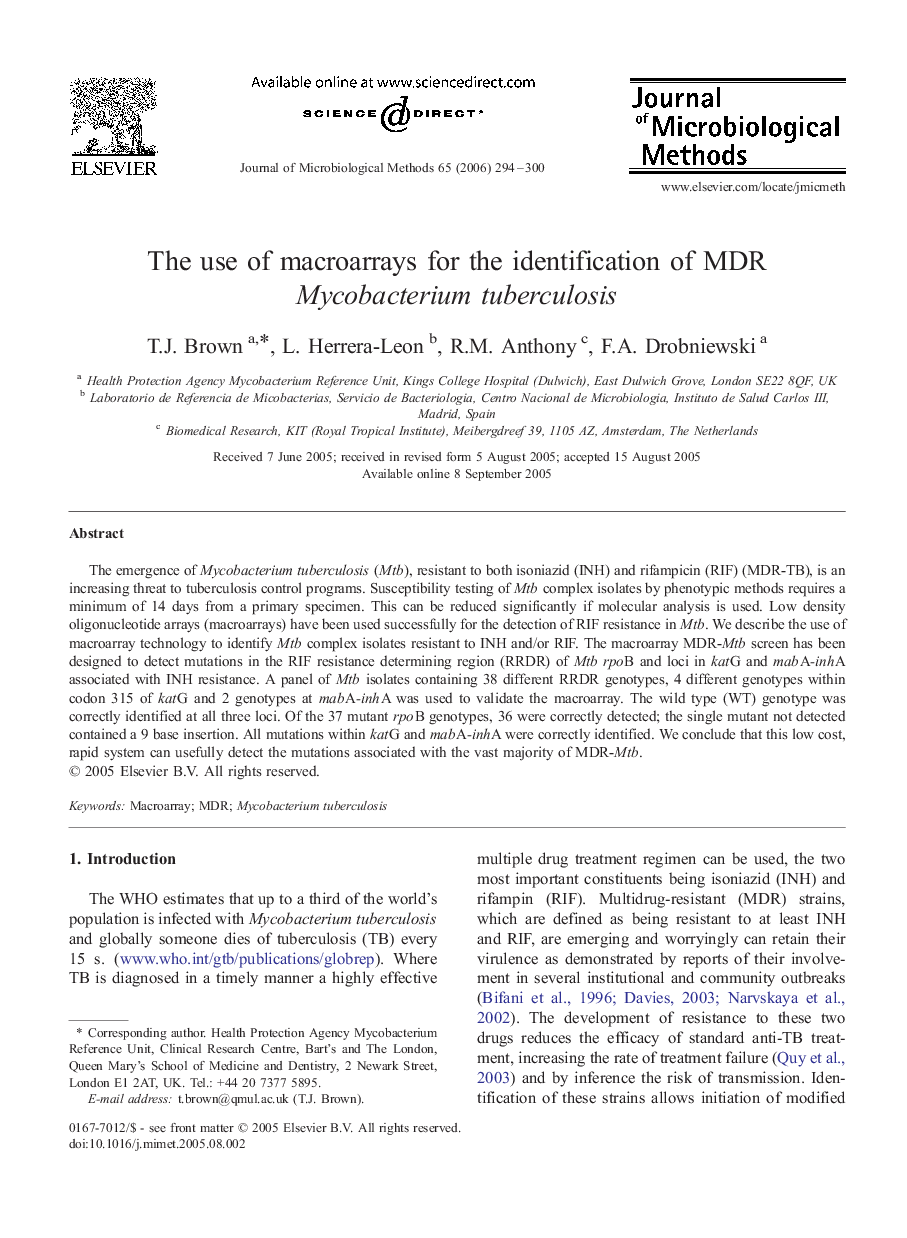| Article ID | Journal | Published Year | Pages | File Type |
|---|---|---|---|---|
| 2091290 | Journal of Microbiological Methods | 2006 | 7 Pages |
Abstract
The emergence of Mycobacterium tuberculosis (Mtb), resistant to both isoniazid (INH) and rifampicin (RIF) (MDR-TB), is an increasing threat to tuberculosis control programs. Susceptibility testing of Mtb complex isolates by phenotypic methods requires a minimum of 14 days from a primary specimen. This can be reduced significantly if molecular analysis is used. Low density oligonucleotide arrays (macroarrays) have been used successfully for the detection of RIF resistance in Mtb. We describe the use of macroarray technology to identify Mtb complex isolates resistant to INH and/or RIF. The macroarray MDR-Mtb screen has been designed to detect mutations in the RIF resistance determining region (RRDR) of Mtb rpoB and loci in katG and mabA-inhA associated with INH resistance. A panel of Mtb isolates containing 38 different RRDR genotypes, 4 different genotypes within codon 315 of katG and 2 genotypes at mabA-inhA was used to validate the macroarray. The wild type (WT) genotype was correctly identified at all three loci. Of the 37 mutant rpoB genotypes, 36 were correctly detected; the single mutant not detected contained a 9 base insertion. All mutations within katG and mabA-inhA were correctly identified. We conclude that this low cost, rapid system can usefully detect the mutations associated with the vast majority of MDR-Mtb.
Related Topics
Life Sciences
Biochemistry, Genetics and Molecular Biology
Biotechnology
Authors
T.J. Brown, L. Herrera-Leon, R.M. Anthony, F.A. Drobniewski,
